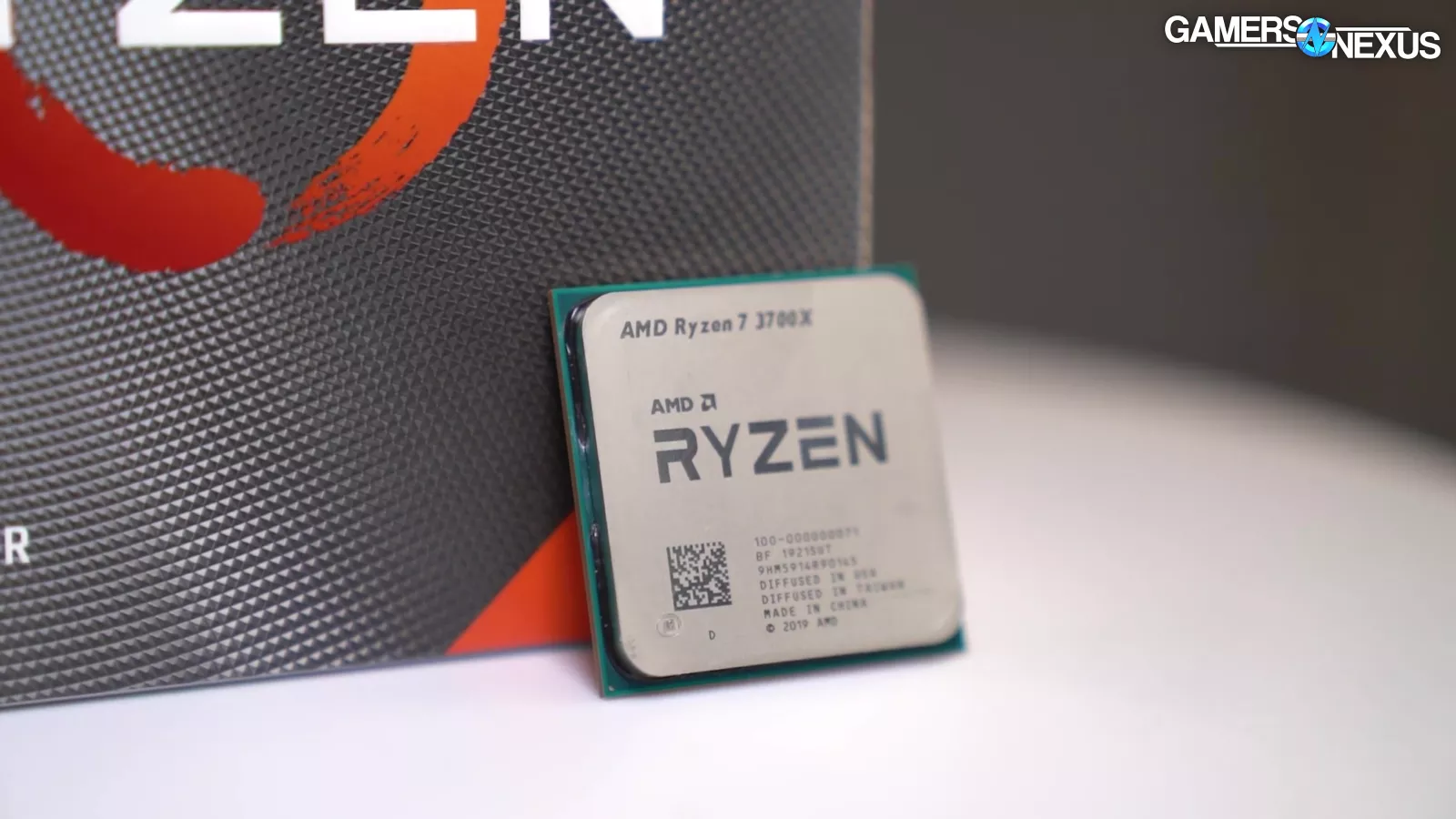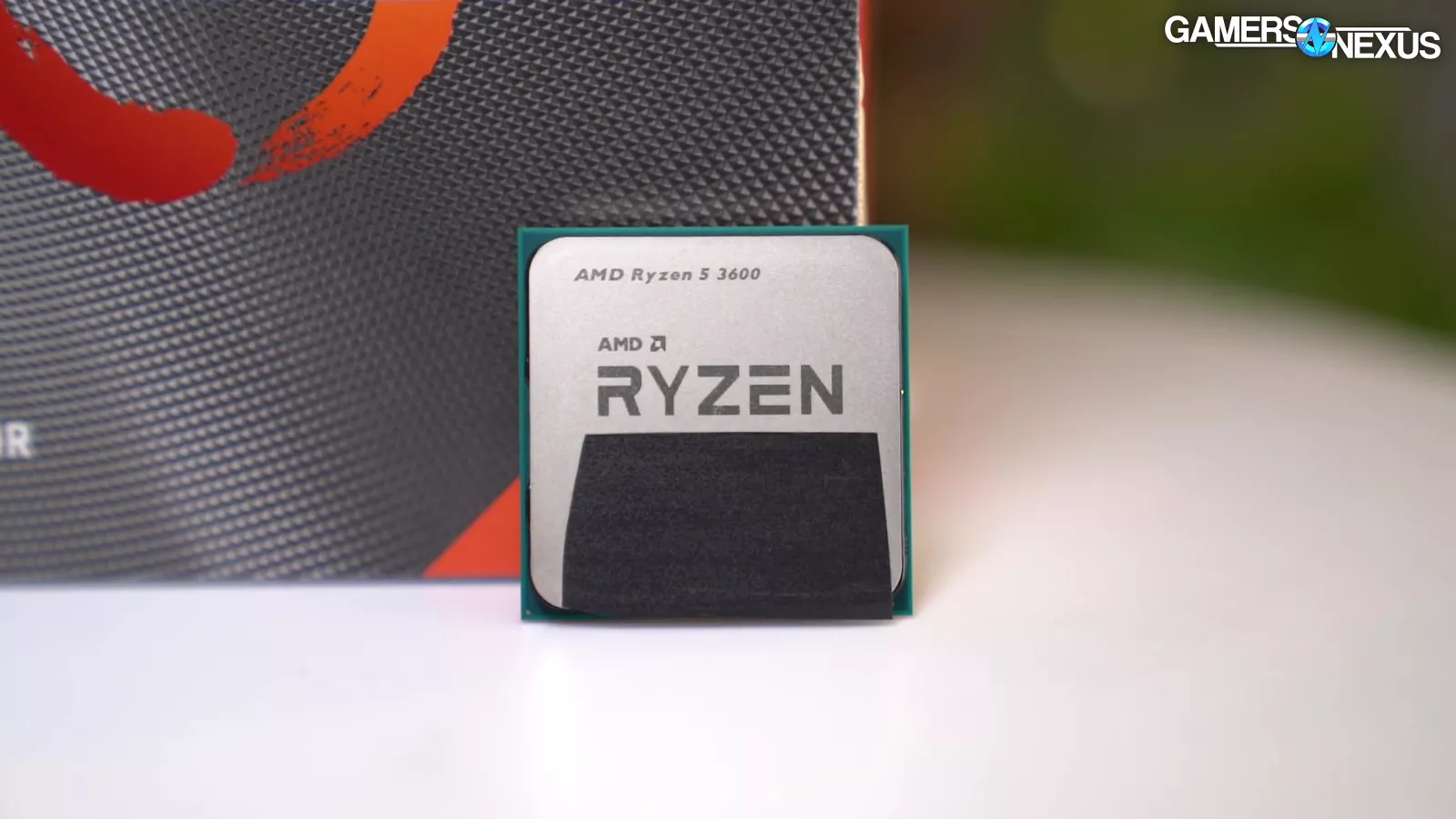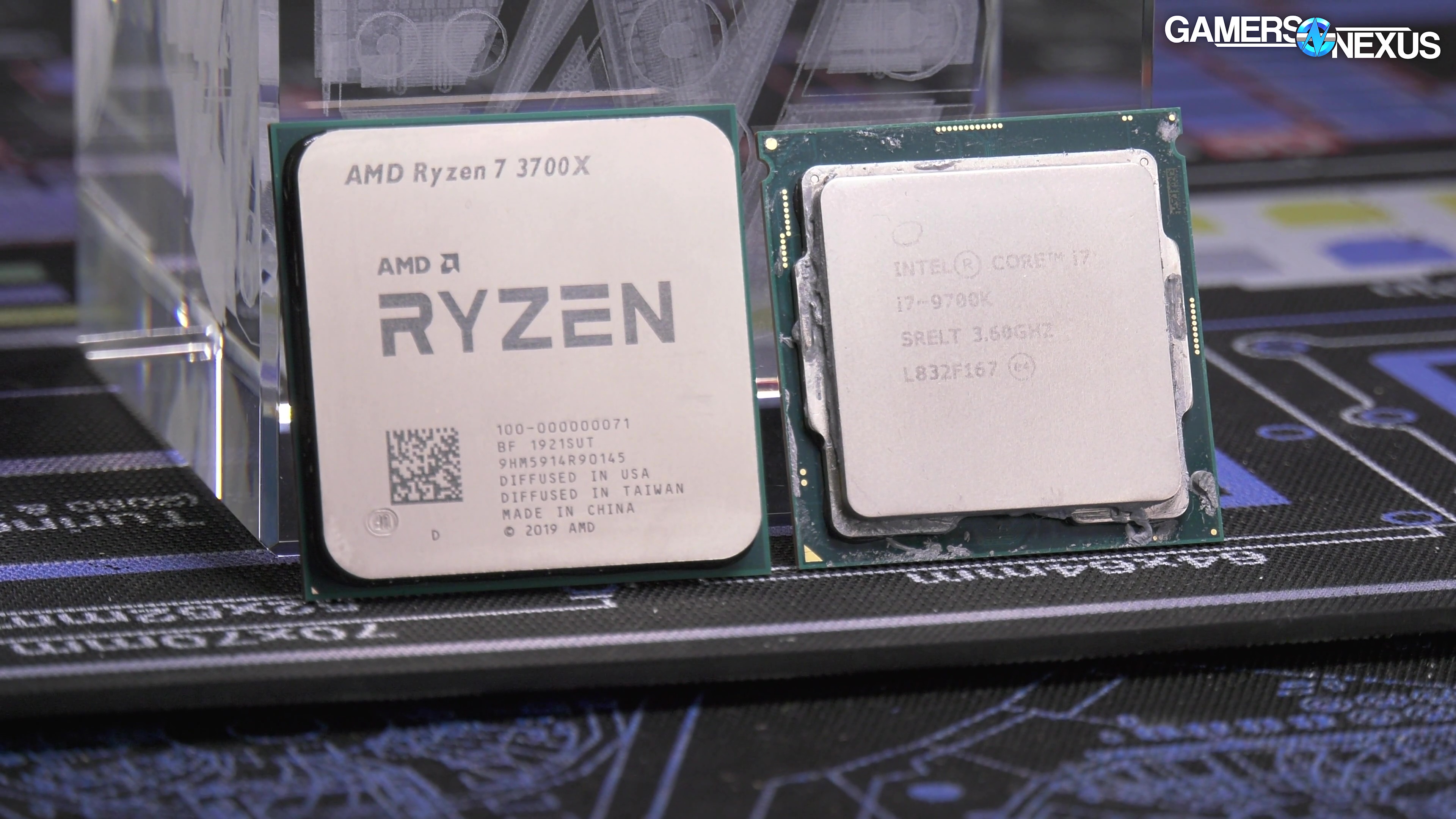
We put the AMD R7 3700X and R5 3600 through numerous modern game benchmarks that include FFXIV: Dawntrail, Baldur’s Gate 3, Dragon’s Dogma 2 and more
The Highlights
- The 3700X and 3600 are now 5 years old yet are still good
- There are many better CPU options out there, both across AM4 and AM5 sockets
- If you’re a gamer looking for a good, affordable in-socket upgrade, the 5700X3D might make sense
- Original $330 (3700X) and $200 (3600)
- Release Date: July 7, 2019
Table of Contents
- AutoTOC

Intro
We’re revisiting the AMD R7 3700X (watch our review here) and R5 3600 (watch our review here) today. We first reviewed these CPUs in July of 2019, so somehow, it’s been 5 years now. AMD Zen 5 CPUs are coming out in just a couple weeks, so we thought now would be a good time to refresh everyone on the performance of the 3700X and 3600. We’d recommend waiting to buy anything until we see how the new CPUs perform, but this gets things started.
This testing features an entirely new test suite and new data for every chart. We have a big overhaul to our games testing, including a ton of new games. We’ve added Final Fantasy 14: Dawntrail, Dragon’s Dogma 2, Starfield, Baldur’s Gate 3, and we’ve brought back some others. This video will help lay the groundwork for upcoming reviews over the rest of the year.
Editor's note: This was originally published on July 25, 2024 as a video. This content has been adapted to written format for this article and is unchanged from the original publication.
Credits
Test Lead, Host, Writing
Steve Burke
Testing
Patrick Lathan
Mike Gaglione
Video Editing
Tim Phetdara
Writing, Web Editing
Jimmy Thang
Overview
The AMD R7 3700X and 3600 launched in 2019. The original 3700X price was $330, with the 3600 non-X’s original price at $200. This was a massive difference. For gaming at the time, in a lot of cases, it made sense to buy the 3600 rather than the 3700X or 3600X. You could save money and, as with the older AMD X vs. Non-X CPUs, you were often paying $30-$50 for a letter. To overclock the non-X CPUs to hit X variant performance in early Ryzen iterations was trivial, often amounting to a few minutes of work. For that reason, we often advocated the non-X 6-core parts for cost-saving reasons with a few key exceptions.
The biggest exception was for users who were going to perform non-gaming, heavily multithreaded workloads, which is where the R7 CPUs stepped in. This was the generation where AMD didn’t launch initially with a 3700 non-X, departing from the 2700 and 1700 series and their X variants.
The 3700X went kind of crazy later in its life though: The CPU was regularly dropping into the $260 range, which made it instantly a top choice at that price.
AMD’s closest competition at this time was fierce: In the first Zen launch, there were still early teething issues that’d get worked out over the next generation or two. Intel was relevant not just for performance, but for an expectation of stability -- and that tide has really turned on Intel in recent years in amusing ways.
The 2700 (watch our revisit here) and 2700X (watch our revisit here) fought the 8000 series, including the 8700K (watch our review here).
For today’s revisit, we’re mostly just re-establishing our dataset for the upcoming reviews and trying to produce something helpful for you all at the same time. For this, we’ll be focusing on two things:
- First, the performance difference against in-socket upgrades to the X3D CPUs, such as the 5700X3D and 5800X3D. We also have 5600X3D data
- Second, giving a baseline expectation for what you can get from a total platform overhaul to either AM5 or LGA1700
Our production workloads will also look at non-X3D comparisons, like with the 5950X.
Right now, a lot of your in-socket options would either be used chips of AM4 or a new 5700X3D. New platform options might include the 7800X3D, 14700K, or similar.
Intel currently has some massive problems with platform stability and reliability, so currently, we are not recommending Intel until it is transparent with what precisely is going wrong with their CPUs.
And again, our goal today is to just start establishing charts. We ran 35 CPUs through thousands of test passes in just 1 week, which is a major accomplishment for our team. We’ve really refined both the manual processes and automation over the last decade and are excited we can run so much through so fast. All of that said, there are effectively infinitely more CPUs we can test. Our next additions will be the 8700K (watch our original review) and 9900K (watch our original review), then the Zen 5 CPUs.
Let’s get into the testing. We’ll start with game benchmarks.
Game Benchmarks

FFXIV: Dawntrail (1080p)
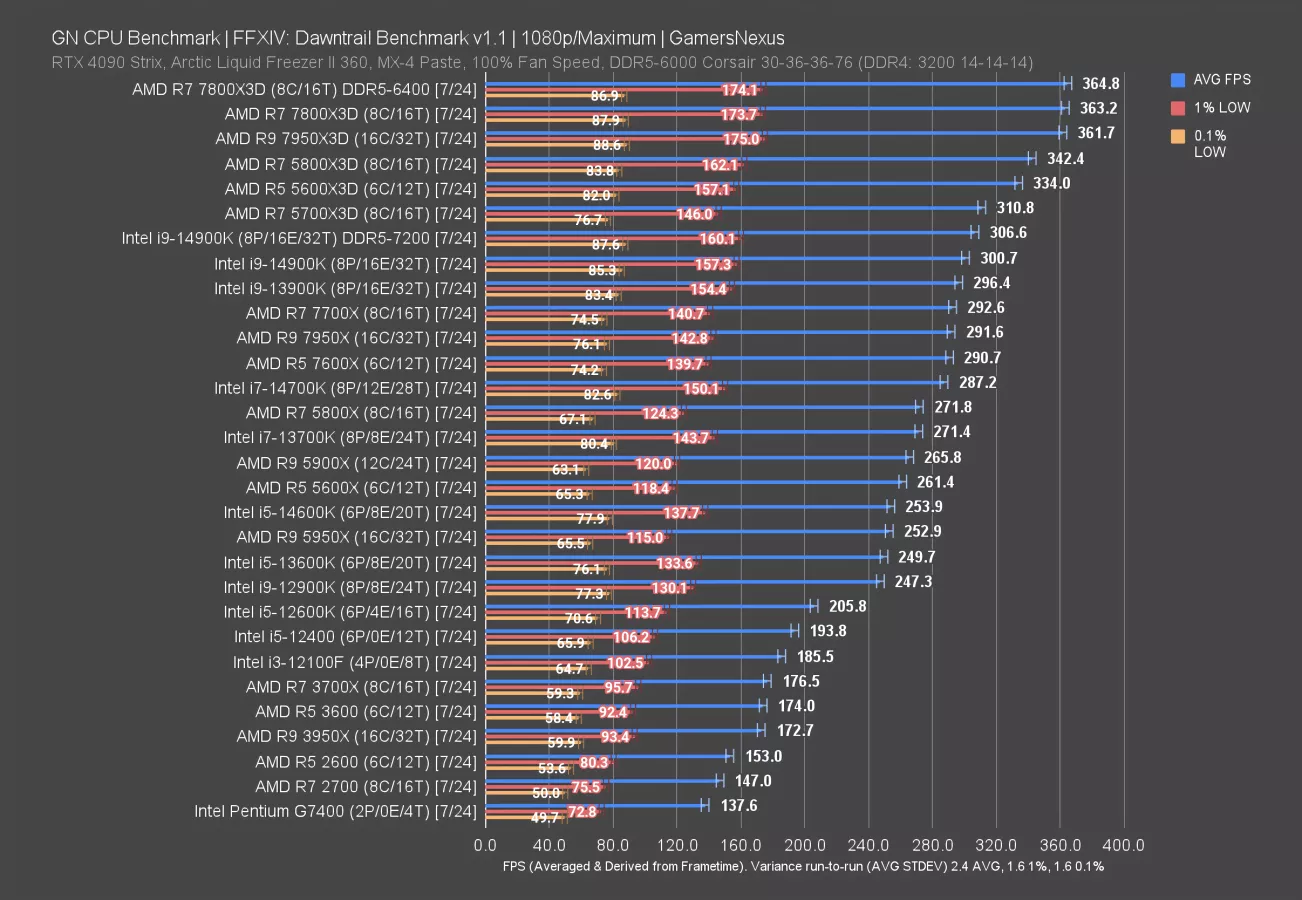
Final Fantasy 14: Dawntrail is one of our newest updates and is from 2024. This benchmark just came out recently and brought with it major optimizations and new graphics.
The 3700X ran at 177 FPS AVG with strongly positioned 1% lows relative to the average and overall consistent frame-to-frame delivery. The 3700X ranks just below the 12100F in this particular test, with the 3600 just below the 3700X. This is consistent with reviews of the time, including ours, which were that the 3600 and the R5 series had supplanted the i5 series for the mantra “an R5 is enough for gaming.”
Compared to the R5 2600 (watch our review), the 3600 is 14% ahead. The 2700 trails from its reduced frequency and under-utilized cores.
Anyone upgrading in-socket would be best equipped with the $183 R7 5700X3D, which we reviewed somewhat recently. The 5800X3D is technically superior, but in the places we were able to find it in stock, it was often double the price of the 5700X3D. The 5600X3D (watch our review) has a 300 MHz higher boost clock than the 5700X3D, so in this situation, it does better by 7.5%. It isn’t widely available, though.
If you were to move to the 7800X3D at 363 FPS and an entirely new platform, ignoring the pending 9000 series CPUs, the uplift would be about 106% from the 3700X and 109% from the 3600.
FFXIV: Dawntrail (1440p)
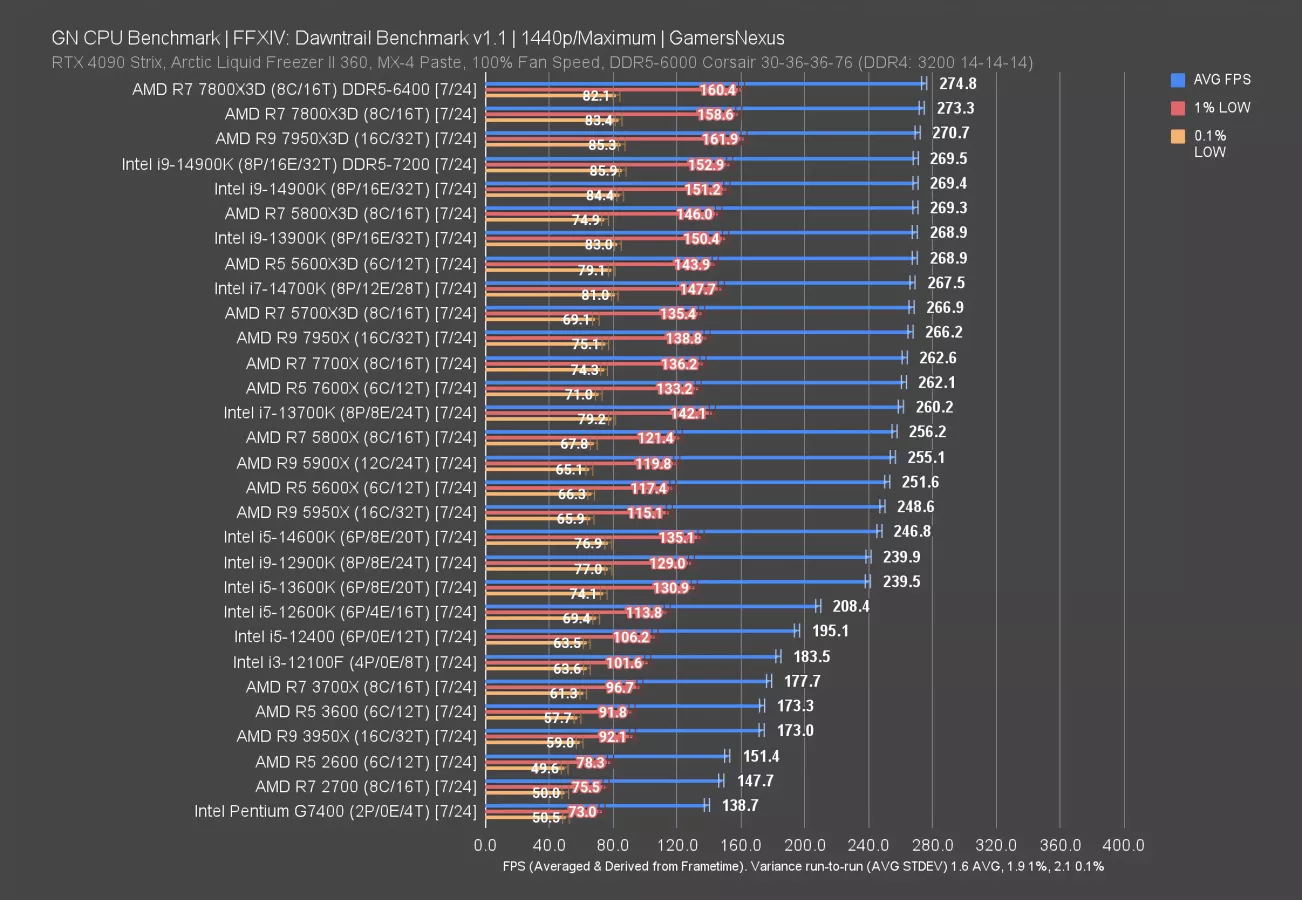
At 1440p, despite increasing the GPU load, we still ended up with scaling lower down the stack. The 3600 and 3700X would still benefit from upgrades, although realistically, both of these CPUs are perfectly fine in this test. The 3700X and 3600 are about the same as at 1080p since the CPU is still fully loaded.
The 5700X3D would give an uplift of 50% from the 3700X and 54% from the 3600. The 5800X3D (watch our review) does a little better, but the top of this chart is getting squashed for scaling by the additional load of 1440p. The 7800X3D’s 273 FPS AVG posts a similar 54% to 58% lead from these CPUs, limited by GPU scaling.
Baldur’s Gate 3 (1080p)
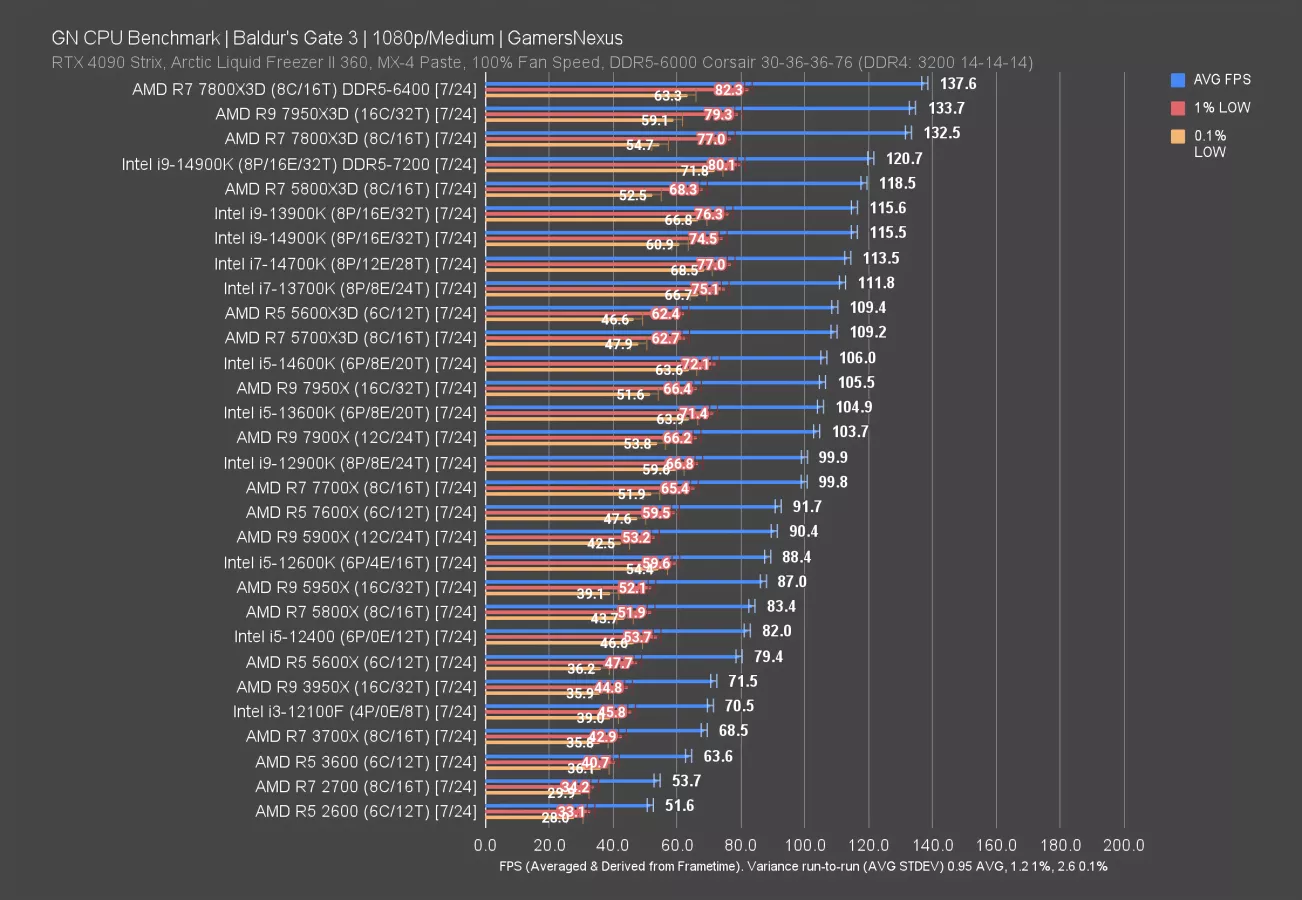
Baldur’s Gate 3 launched to critical acclaim in 2023. At 1080p/Medium, scaling is fairly clean all the way up the stack. Memory posts an uplift in this game, with the DDR5-6400 7800X3D result climbing 3.8% from the standard test and the 14900K climbing 5% with DDR5-7200.
The 3700X ran at 68.5 FPS AVG with lows paced proportionally well, leading the 3600 by about 8%. Upgrading the 3700X to a 5700X3D would yield a 59% uplift, or 73% to the 5800X3D. The 3600 would gain 71% or 86% to these same options. Moving to a new platform and 7800X3D with like-for-like memory would improve by 93% from the 3700X and 108% from the 3600.
Dragon’s Dogma 2 (1080p)
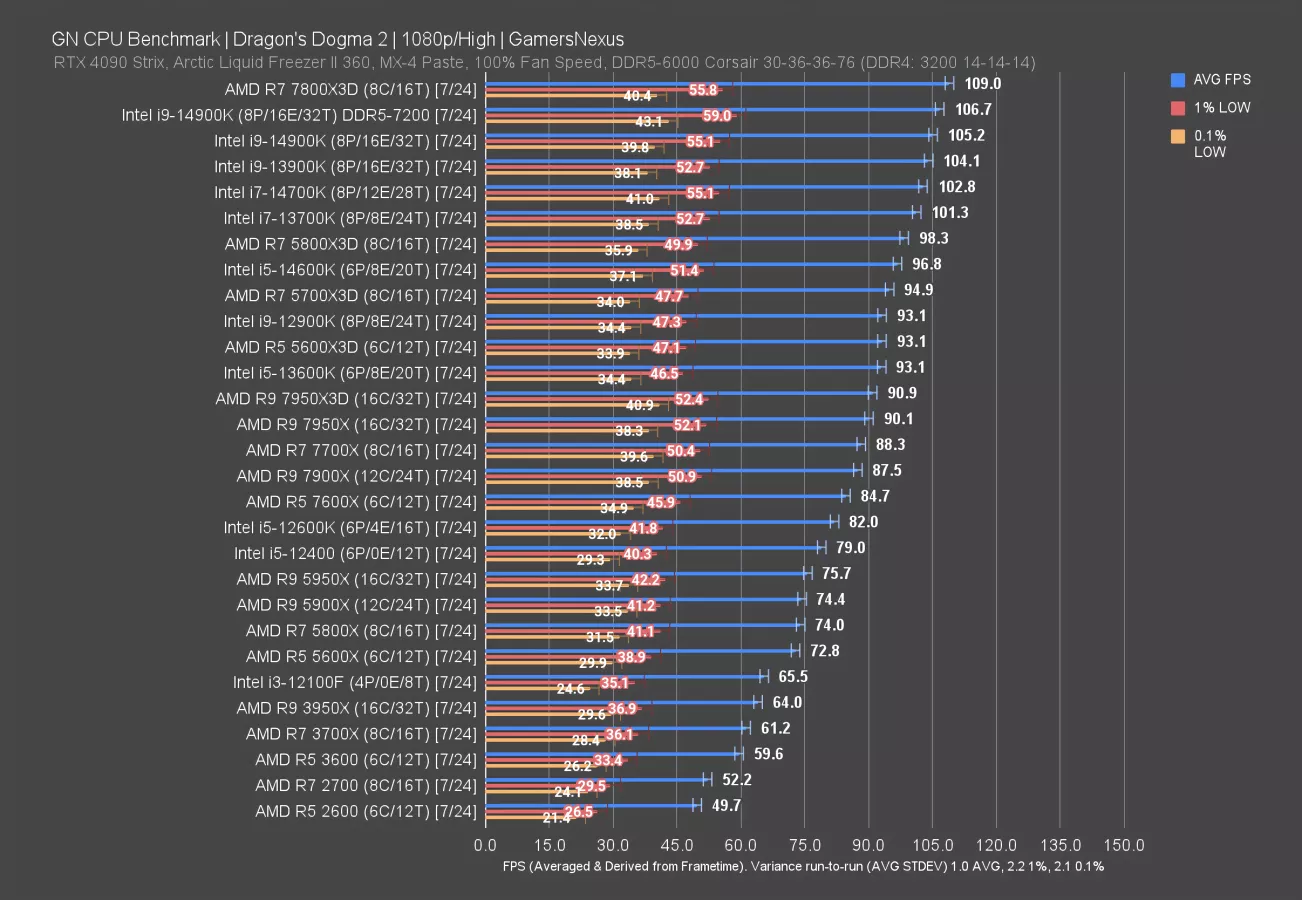
Dragon’s Dogma 2 was a mess at launch, has received patches, and is still somewhat of a mess -- but it’s a great CPU benchmark. This is a 2024 title. We have a whole separate piece on Dragon’s Dogma 2 if you want to learn more about our testing methodology on the game.
At 1080p/High and tested in the same city we used for our standalone piece, the R7 3700X ran at 61 FPS AVG, about the same as the 3600’s 59.6 FPS AVG. Lows are overall OK, although we still see some animation stutter in this title for all tests.
The 5800X3D posts a 98 FPS AVG, leading the 3700X and 3600 by 60-65%. The cheaper 5700X3D is 55-59% ahead of these CPUs. A 7800X3D boosts that to 78-83%. The 14900K is more competitive here than it was in some other tests, but still doesn’t match the 7800X3D and carries with it too much uncertainty with Intel’s recent problems.
Starfield (1080p)
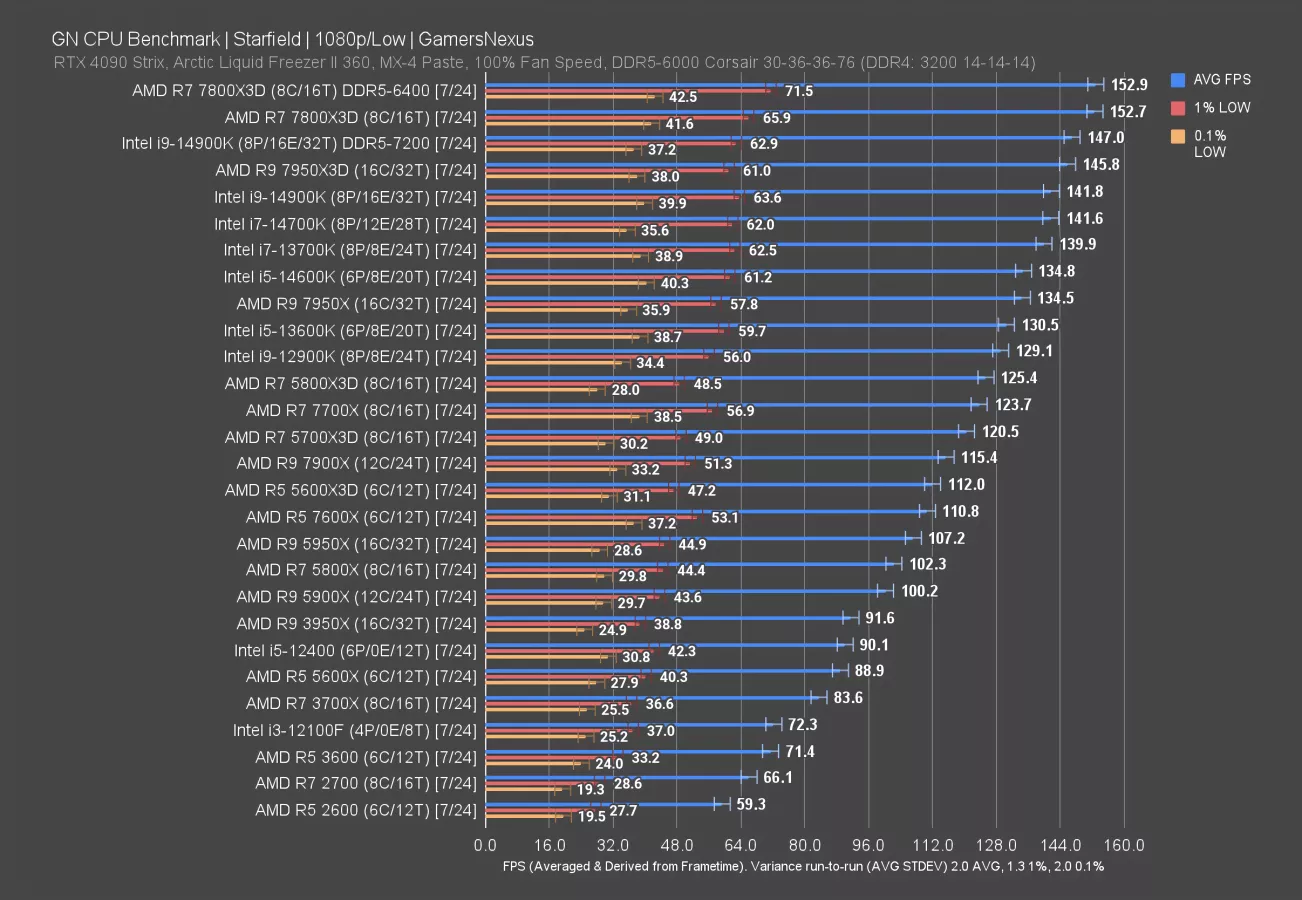
Starfield is up next. This one was a 2023 release.
At 1080p/Low, the 3700X ran at 84 FPS AVG, leading the 3600 by a more noteworthy 17% in this title. The extra cores seem to help between these two CPUs this time.
The 5700X3D leads these CPUs at 121 FPS AVG, establishing a 44% uplift over the 3700X and about 68% over the 3600. The 5800X3D pushes that further, but isn’t worth the added cost based on prices we’re seeing right now. The 7800X3D at 152.7 FPS AVG leads the 3700X by 83% and 3600 by 114%.
Intel’s best option would predictably be the 14900K, but until we know what is causing the failures of these CPUs, we can’t recommend them in any capacity. Intel’s lack of transparency means a lack of certainty and confidence for the public.
F1 24 (1080p)
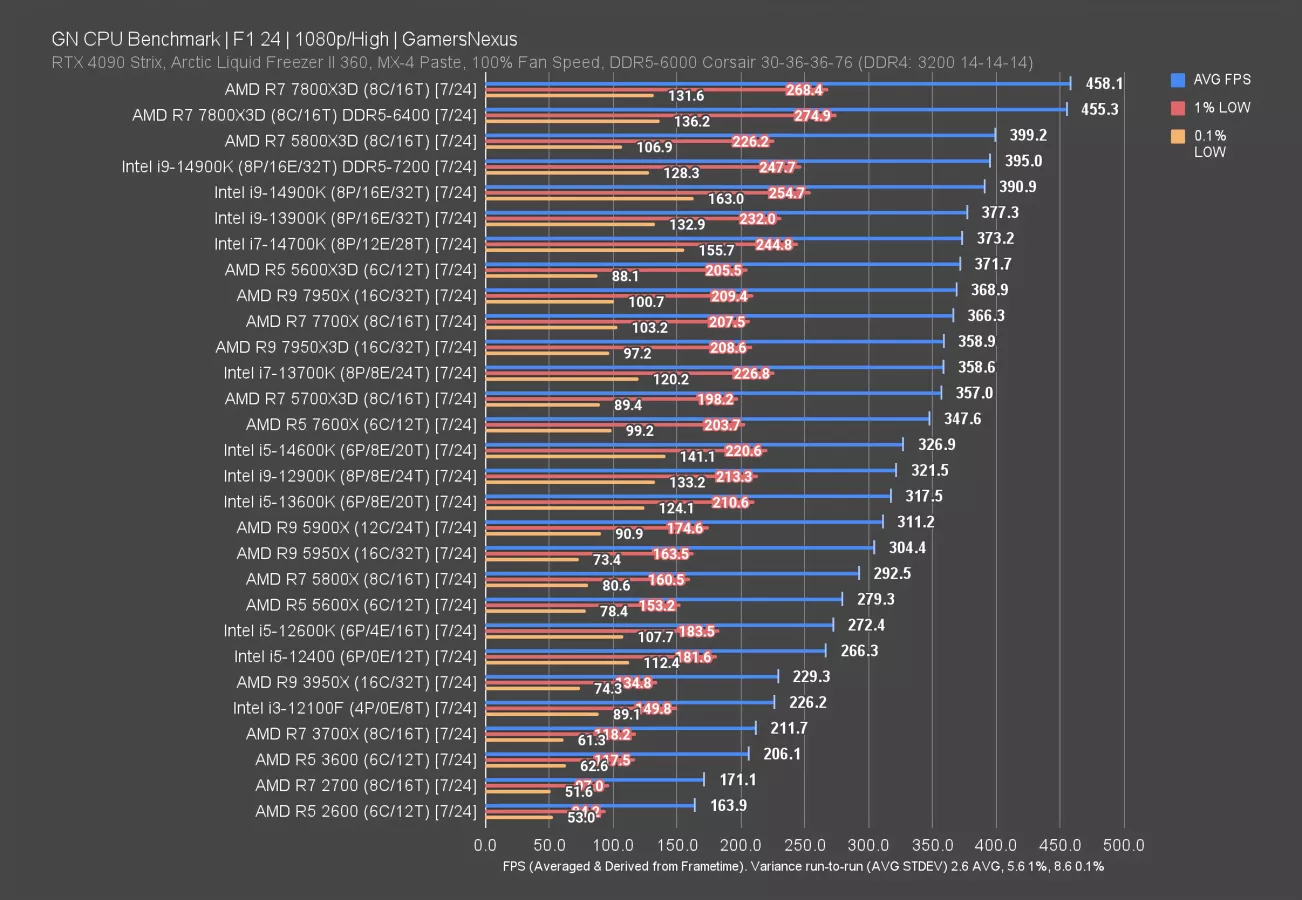
F1 24 is up next. This one came out in... 2024.
Framerate is high in this game. There’s a ton of room for CPU scaling with minimal GPU overhead using 1080p/high, so this allows us to see the impact of CPUs to total performance.
The 3700X ran at 212 FPS AVG. Realistically, this is completely playable -- but we use these tests to look at the relative scaling performance. The 3700X led the 3600 by just 3% here and is ahead of the R7 2700 (watch our revisit) by 24%. The 5700X3D is about 68% ahead of the 3700X, with the 5600X3D outperforming the 5700X3D in this test as a result of its higher boost frequency. If you live near a Microcenter, the 5600X3D could still make sense. It’ll come down to pricing.
The 5800X3D is meaningfully ahead here, up at 400 FPS AVG and leading the 5700X3D by 12%.
As for the 7800X3D, that pathway would more than double the framerate of the 3700X and 3600. We did not measure an uplift from the memory change in this title, however.
Intel’s 14900K (read our review) is the closest Intel competition, but underperforms against the 5800X3D. Notably, Intel’s 0.1% lows are generally advantaged over AMD’s in this specific game; however, variance is also high for lows in this title.
F1 24 (1440p)
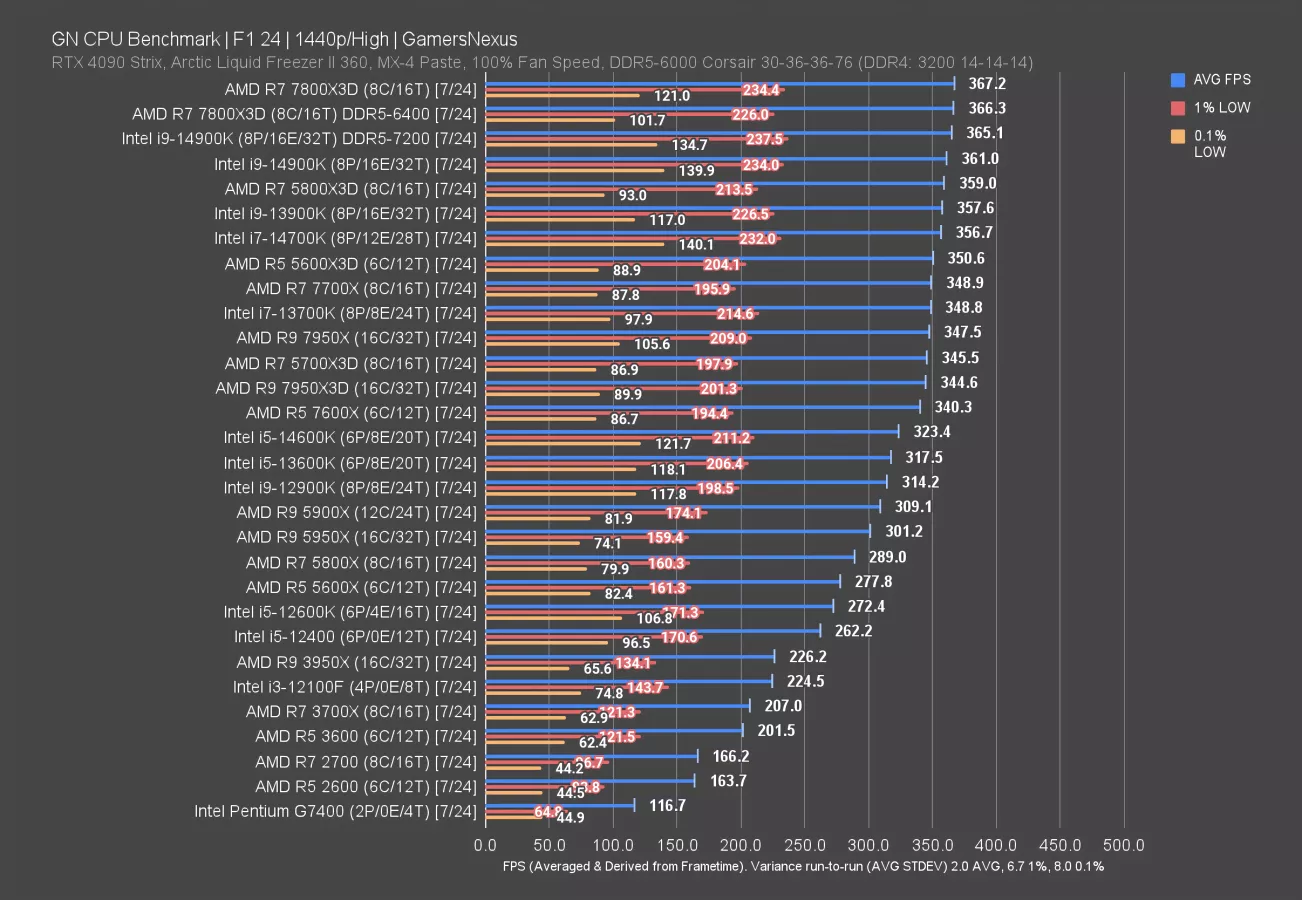
1440p trims the top-end as a result of the increased GPU load, but the lower half of the chart remains mostly unchanged. Other than reducing the percent gain from the 3700X and 3600 to higher-end parts as a result of the nearer GPU bind, this is mostly the same. Let’s move on.
Stellaris
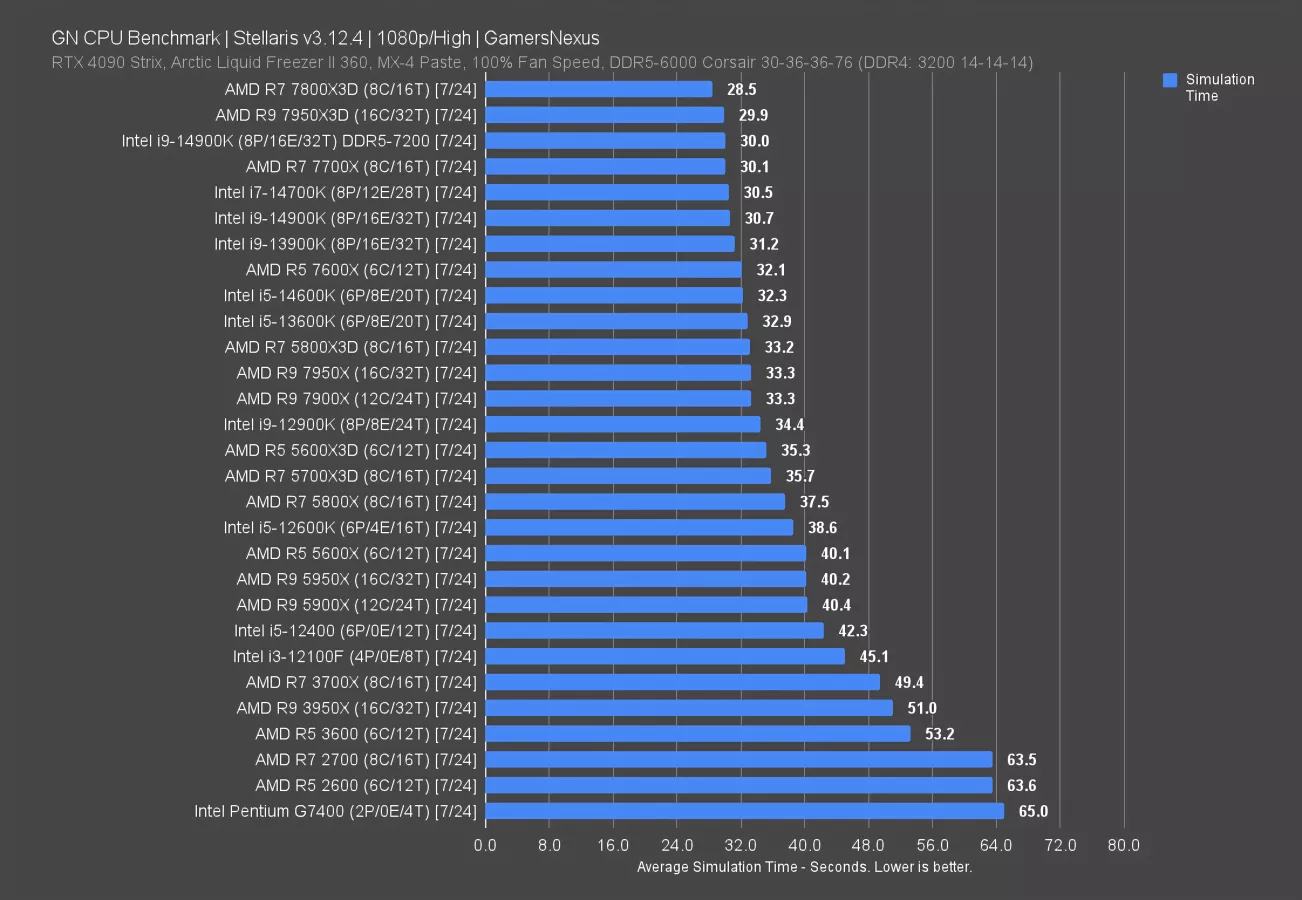
The next test is for simulation time rather than frames per second. We’re using Stellaris, a 2016 4X game that has received continual updates. Despite its age, this is one of the more useful CPU metrics as it shows a real-world time-based performance, similar to what we see in production benchmarks. You can see a tangible impact to how long you’d wait for simulation to complete.
In this one, the 3700X outperformed the 3600 with its 49-second result on average, a reduction from the 53-second result of about 7%.
The 7800X3D posts a 42% reduction in simulation time, at 28.5 seconds to 49.4 on the 3700X.
Intel does OK here, with the 14900K about tied with the 7700X and 14700K -- there’s no meaningful difference between these CPUs. Upgrading the memory on Intel slightly improved its result, though.
Rainbow Six Siege (1080p)
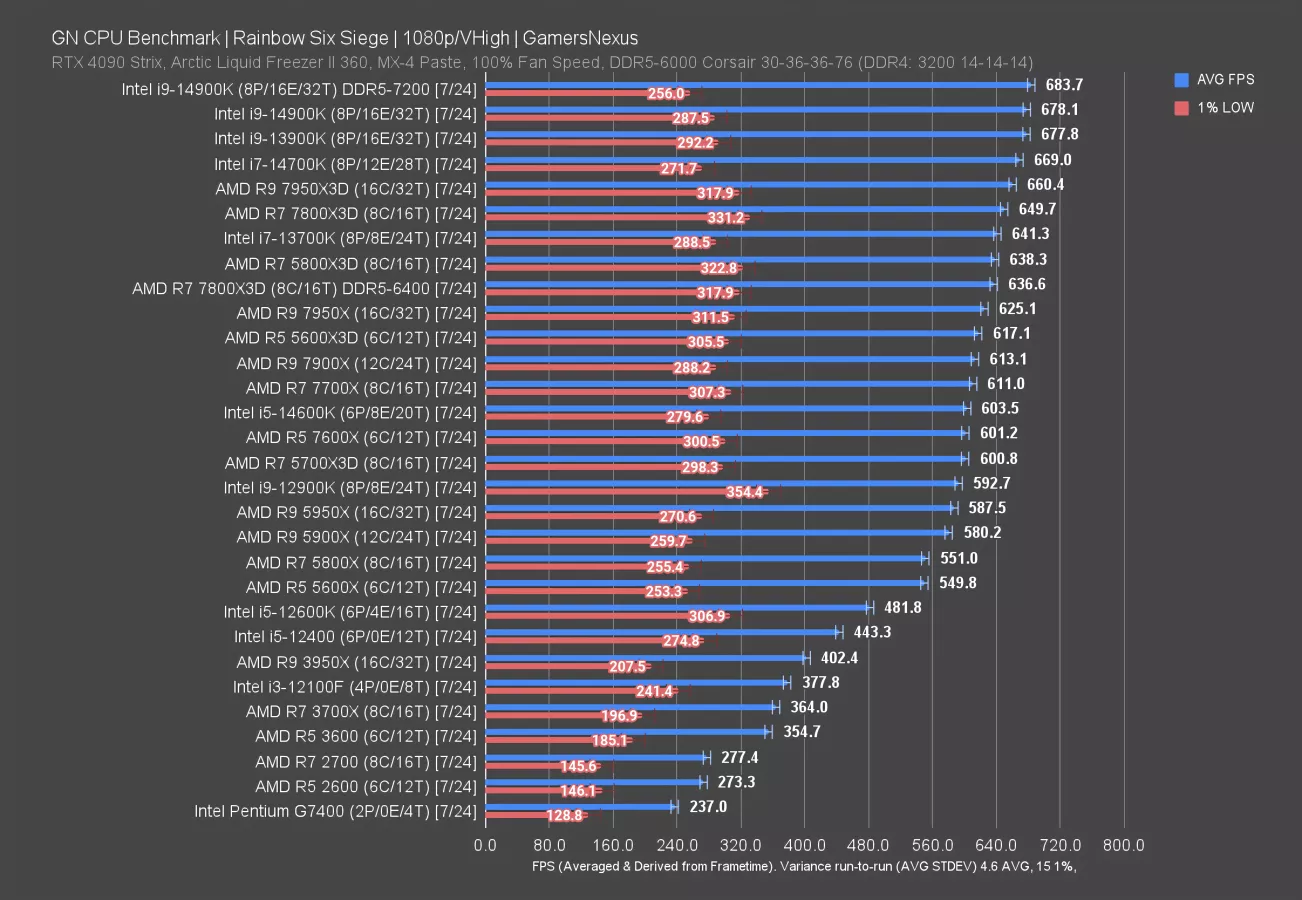
Rainbow Six Siege remains in our test cycle for its CPU-heavy programming. This is a 2015 game and is the oldest in our suite currently, but has received continual updates. It’s also interesting because Intel maintains the top rank for our testing in this game.
The 14900K with faster memory ran at 684 FPS AVG, with the 14900K and 13900K on the standardized memory next. The 7800X3D is a few ranks down and between the 13700K and 14700K. As for the subjects of our revisit today, the 3700X ran at 364 FPS AVG, ahead of the 3600 by about 3%. The lead over the 2700 and 2600 is significant. If you’re on a 1000- or 2000-series Ryzen chip and are OK with used options, it may make sense to spend under $70 on one of these parts for a cheap upgrade. The 5800X3D and 5600X3D both benefit from their clock boost over the 5700X3D.
That’s enough games for now. Let’s move on to production workloads.
Production Benchmarks
Blender
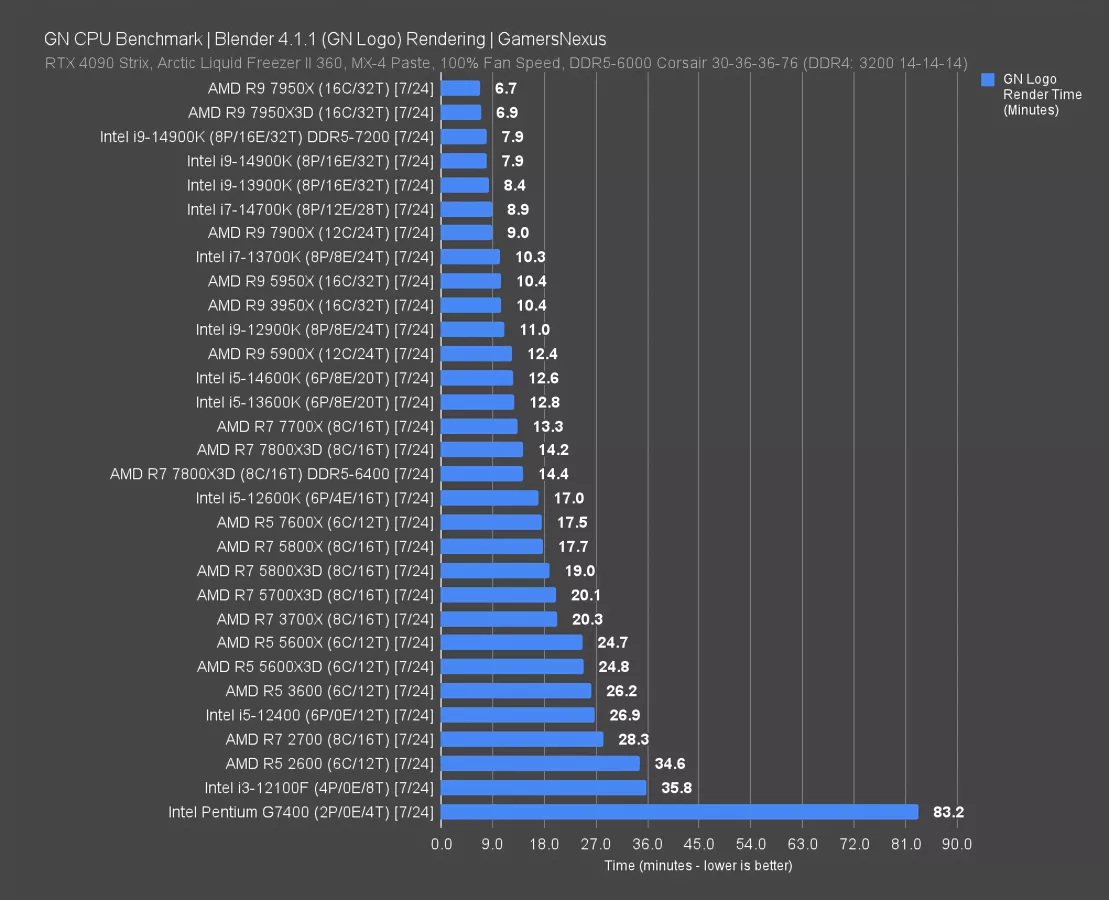
Blender 4.1.1 is up first, tested using the GN logo render. This is an unrelenting all-core workload.
The 3700X is able to leverage its extra cores over the 3600 here, landing at 20 minutes to complete the render versus 26 on the 3600. That’s a noteworthy reduction in time requirement of 22.5%. The AM4 X3D CPUs don’t benefit from their extra cache here. More cores makes the most impact, followed by higher frequency. The cache doesn’t come into play much. The 7950X is the current chart leader, followed by the 14900K from Intel.
The best in-socket upgrades for someone primarily doing work like this with the 3700X or 3600 would be the 5950X (or even 3950X). If leaving the socket, almost anything modern would be an upgrade.
7-Zip Compression
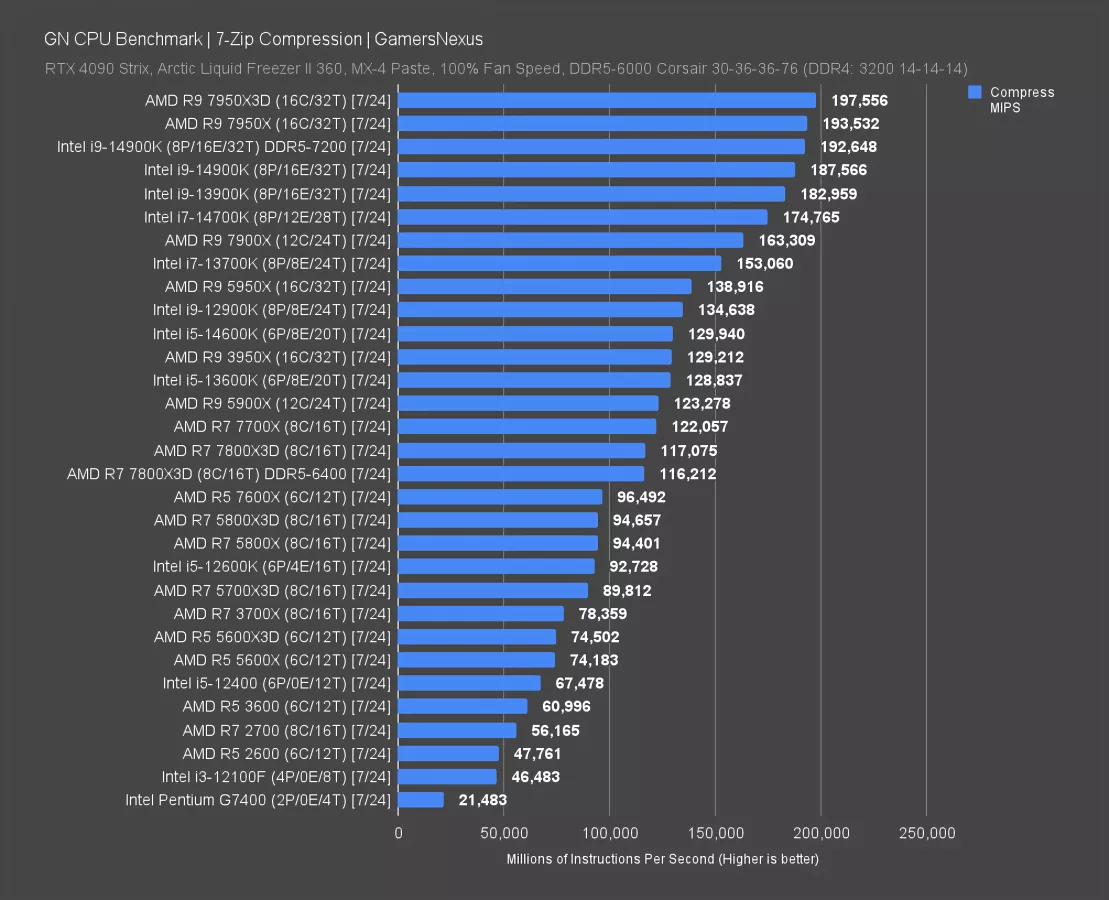
In 7-Zip compression, the 3700X completed 78K MIPS, or millions of instructions per second, which had it similar to the 5600X3D and 5600X. The 5800X leads the 3700X by 20%. Compared to the 3600, 3700X owners benefit from a 28% uplift. Upgrading in-socket for this specific type of work would be best done with a 5950X (watch our review) or 3950X. At the top of the chart, the 7950X and 14900K are similar in performance.
7-Zip Decompression
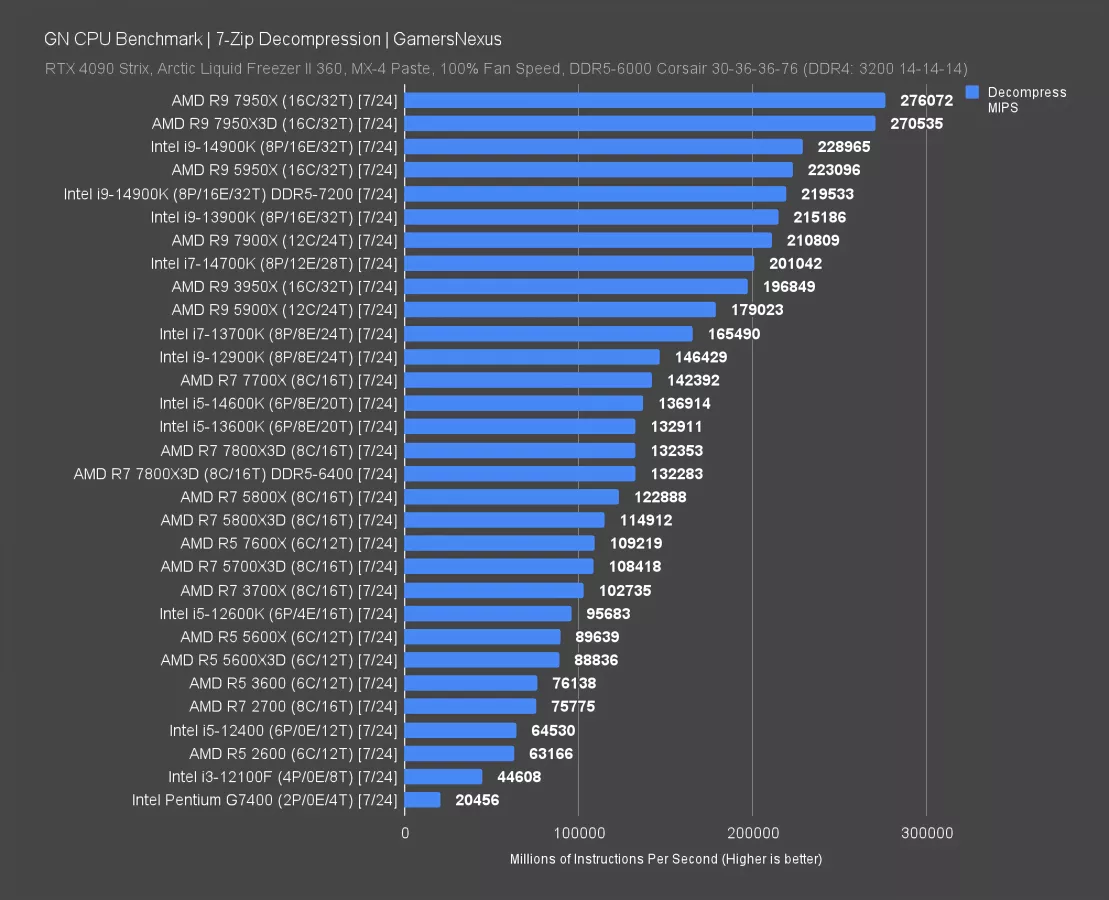
In decompression, the 3700X has a larger 35% lead over the R5 3600. An in-socket upgrade to the 5950X would yield a 117% improvement from the 3700X, getting most of the performance afforded by modern CPUs. The 7950X extends beyond the 5950X with an improvement of 24%, of course at the cost of a new platform.
Adobe Photoshop
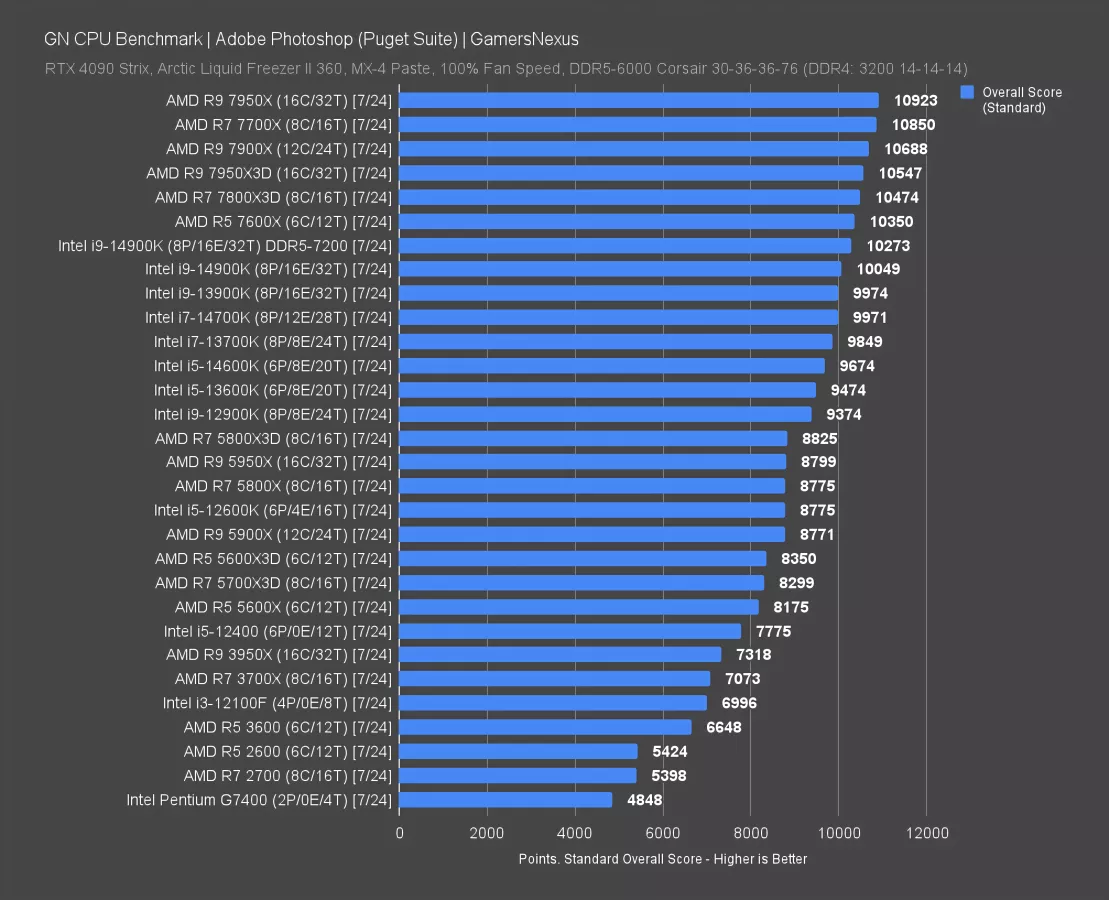
We’re moving to the Puget suite for Adobe software.
In Photoshop, the overall score doesn’t heavily skew towards high core-count CPUs. It still favors a mix of core count and frequency, as evidenced by the positioning of the 5600X3D and 5800X3D.
The 3700X posts a score of 7000 points, where higher is better and is a representation of time taken for various filters, transforms, and other tasks. That has it 6% ahead of the 3600. The in-socket 5800X3D gives an uplift of 25% over the 3700X. The 7950X is a huge jump of 54% over the 3700X, though the gaming gains we saw earlier were generally larger for the 7000 series.
Adobe Premiere
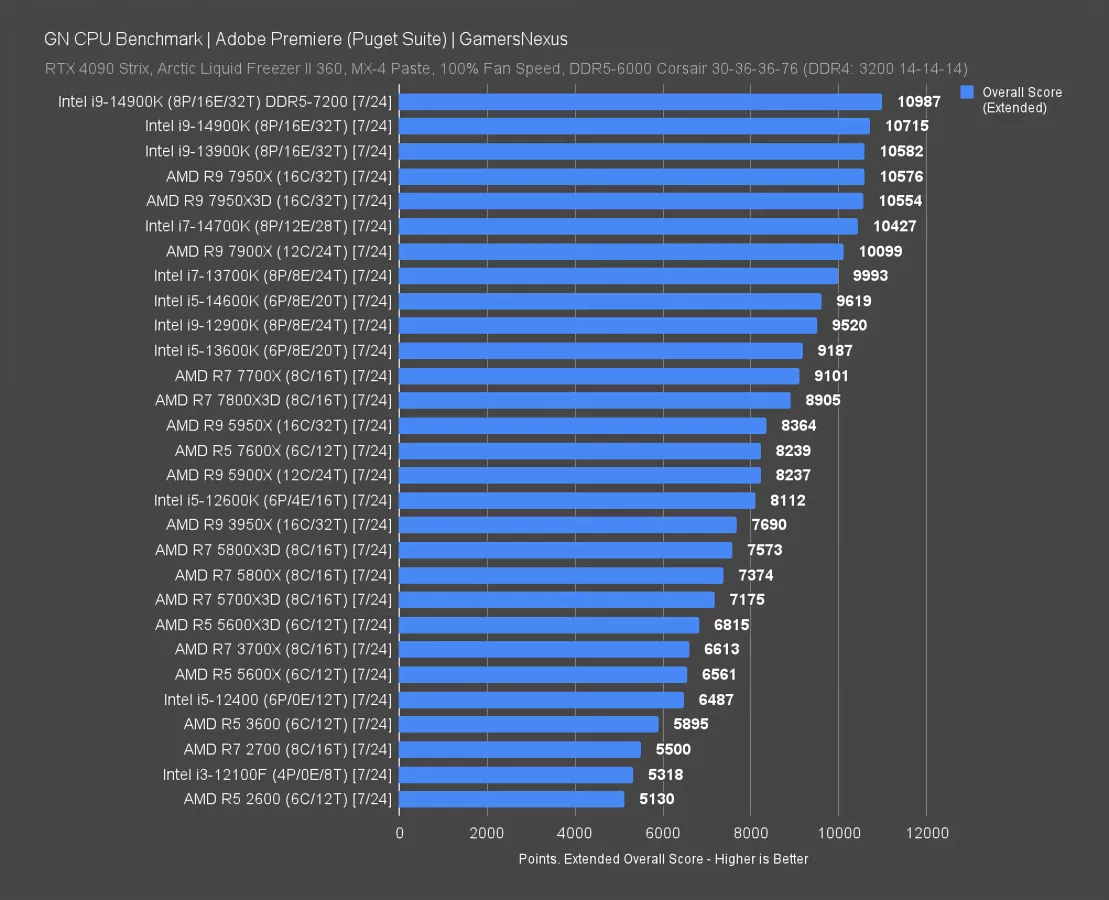
Adobe Premiere allows Intel to take the lead. The 14900K and 13900K solutions lead the 7950X, followed by the 14700K and then 7900X. Intel is definitely stronger here than it was in most other tests. The 3700X had an extended score of 6613 points, boosted over the 3600’s 5895 by 12%. The 7800X3D produces a similar result to the 5950X. In this workload, the 7800X3D doesn’t carry the same advantages as it does in gaming.
Chromium Code Compile

Now for Chromium code compile, also measured in time. Lower is better.
The best result on our new chart is the 7950X3D at 73 minutes, followed within variance by the 14900K at 75 minutes. The worst on the chart is the G7400 -- we won’t expand the scale to accommodate it since it’s a one-off, but that bar that breaks the chart is 619 minutes. A more reasonable “worst” would be the 2600, down at 311 minutes.
For the 3700X, the result is still OK at 180 minutes. The 3600 required 229 minutes to complete the compile, meaning the 3700X time requirement is 21% lower than the 3600’s. Like in Premiere, Intel does better in this one than in some other tests, but AMD still has the technical chart lead. The in-socket 5950X would bring a huge 80-minute reduction in time required from the 3700X.
Conclusion

The 3700X has held on pretty well in production workloads, though both it and the R5 3600 have aged a lot since they came out 5 years ago, which is expected. There are many better options out there. The AM4 socket remains surprisingly relevant with CPUs like the 5800X3D, which we like. It does seem like it’s getting more difficult to find at a reasonable price in the $300+ territory, which would make one consider a platform change instead.
If you’re a gaming-centric user and you really want to save money, the 5700X3D at $160 to $180 might make sense as an upgrade.

In the used market, if you have something like the 3600, you might consider a 5000-series part as a potential upgrade pathway. If you can get one used for around $70, that might be the best route short of going to a 5700X3D.
For new CPU options, the 7800X3D is worth considering, but we’re going to see how the 9000 series does shortly and how that might impact pricing across the board.
On the Intel side, we don’t feel comfortable recommending any modern Intel CPU at the moment until there is more transparency from the company on what’s going on with their platform stability and longevity issues because it seems to be getting worse. Ignoring those issues, anything from Intel’s 14 series or AMD’s 7000 series would be an upgrade.
In revisiting these CPUs, the R7 3700X and R5 3600 are still pretty damn good. It’s kind of impressive how good they still are. A lot of people get caught up in new launches and the desire to upgrade. If you want to upgrade because it’s fun, go for it. If, however, you’re pretty happy with the performance right now on the applications you run then perhaps just keep using the parts that you have. If you’re not happy, then that’s a great reason to consider an upgrade.
